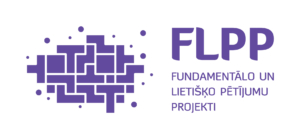PROJECTS RESULTS
The project develops research-based synergy between improvement of the understanding of childhood from a social perspective, activation of museum collections in the public space (incl. e-environment), and acquisition of research skills. This interaction produces both new knowledge of childhood history and improved museum collections.
The result is the development of methodology of mapping and the creation of the typical narrative of history of childhood represented in the museums of Latvia and illustrated by a digital images of collections and descriptions of childhood artefacts, with information about the location of these artefacts in museums of Latvia. Such an experience is new in Latvia, because mapping has not been performed for one specific phenomenon, i.e. history of childhood. The idea to develop the mapping of a separate, thematically selected group of items will allow to centralize materialities stored in museum collections. The thematic selection is a good research base for students, too. The benefit for museums would be the results of student research, which would supplement the content of museum collections.
The result is a multi-faceted database of childhood history representation according to the developed mapping methodology, in cooperation with Latvian museums, which summarizes and scientifically substantiates structured historical sources. The availability of objects in the e-environment would facilitate in-depth research of the collection, for which museum professionals often lack time or knowledge. As a result of successful cooperation, the contents of this database would be constantly developed, both by publishing research works and supplementing it with newly acquired, digitized items of the collection, characterizing the history of childhood. Publications on topics related to the digitization of Latvian museum collections and their role in the development of higher education content should be published on the NEMO (Network of European Museum Organizations) digital platform, promoting wider interest of European museums in the scientific results and findings of this project.
The result is a scientifically and methodologically based integration of a digital database in the study process, which promotes students' research competence, as well as cooperation between museums and the academic environment in the field of research. of Higher Education
of Higher Education